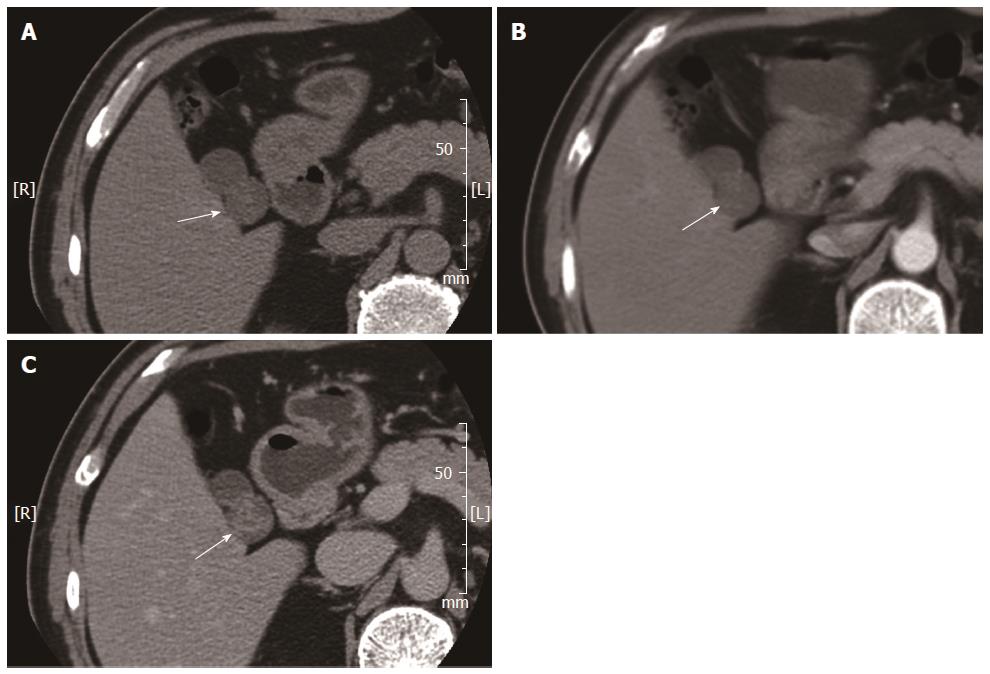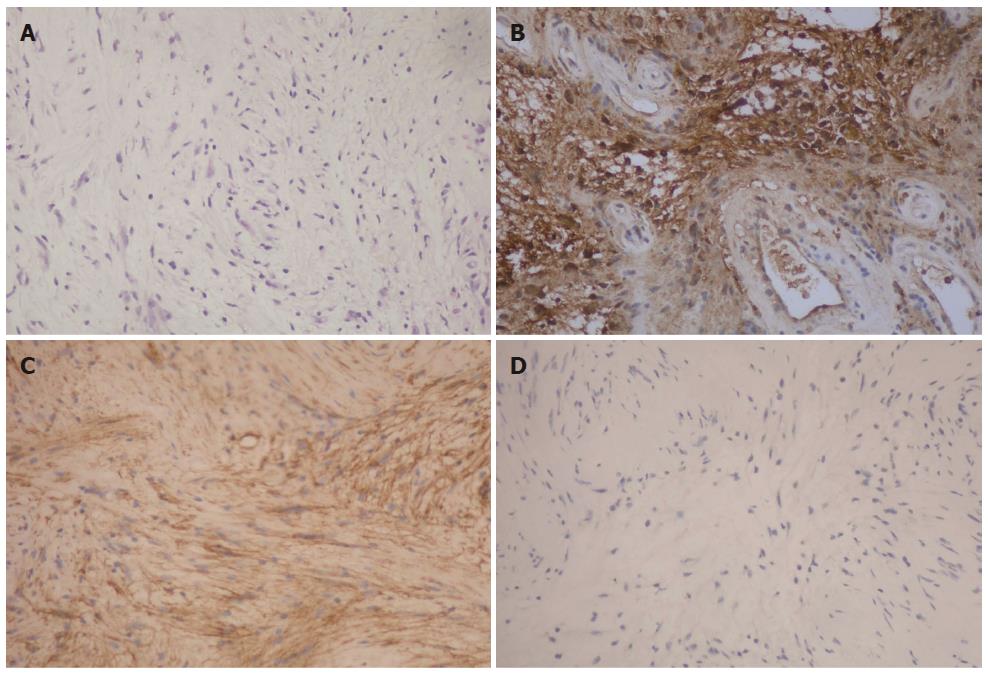Copyright
©2014 Baishideng Publishing Group Inc.
World J Gastroenterol. Jun 7, 2014; 20(21): 6685-6690
Published online Jun 7, 2014. doi: 10.3748/wjg.v20.i21.6685
Published online Jun 7, 2014. doi: 10.3748/wjg.v20.i21.6685
Figure 1 Ultrasound and contrast-enhanced ultrasound imaging.
A: Conventional ultrasound shows a lesion (arrows) sized 2.1 cm in diameter in the gallbladder; B: Color Doppler ultrasound shows no blood supply in the mass (arrows); C: The lesion (arrows) shows hyper-enhancement 21 s after contrast agent injection; D: The lesion (arrows) shows iso-enhancement 34 s after contrast agent injection; E: The lesion (arrows) shows slight hypo-enhancement 54 s after contrast agent injection.
Figure 2 Gallbladder computed tomography imaging.
A: Unenhanced computed tomography shows an iso-attenuating mass (arrow) in the gallbladder; B: No obvious enhancement (arrow) was found in the arterial dominant phase; C: The mass (arrow) shows slight hyper-attenuating in the late venous phase.
Figure 3 Pathological examinations.
A: Microscopic examination shows that the tumor mainly composes of spindle-shaped cells and no atypical cells are found (HE staining; magnification: 10 × 30); B, C, D: Immunohistochemical staining shows the tumor is positive for S-100 protein (10 × 30) (B) and CD56(10 × 30) (C), whereas negative for CD117 (10 × 30) (D).
- Citation: Liu LN, Xu HX, Zheng SG, Sun LP, Guo LH, Wu J. Solitary schwannoma of the gallbladder: A case report and literature review. World J Gastroenterol 2014; 20(21): 6685-6690
- URL: https://www.wjgnet.com/1007-9327/full/v20/i21/6685.htm
- DOI: https://dx.doi.org/10.3748/wjg.v20.i21.6685











